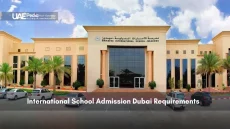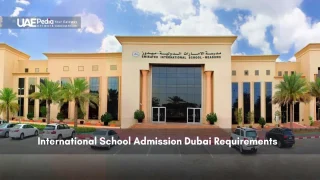What if the secret to world-class universities wasn’t just funding or talent—but a meticulously crafted rulebook? Over 75% of top-ranked institutions in the Gulf region attribute their success to aligning with national quality benchmarks. This invisible architecture ensures every lecture hall and research lab meets globally recognized standards.
Think of these frameworks as desert navigation tools: without them, even the most ambitious academic journeys risk losing direction. We’re breaking down how strategic alignment with national objectives creates thriving learning ecosystems—while preserving institutional creativity.
Whether you’re part of a faculty team or exploring study options, understanding these guardrails matters. They impact everything from degree recognition to research funding. Our guide walks through:
- Core pillars of academic accreditation systems
- Balancing innovation with standardization
- Real-world impacts on student opportunities
- Upcoming reforms in quality assurance
Later sections will unpack specific policies—including insights from recent federal decrees—but first, let’s explore why this foundation matters for everyone invested in knowledge ecosystems. The rules aren’t about restriction; they’re the launchpad for educational breakthroughs.
Understanding UAE Education Council Regulations
Imagine building a skyscraper without blueprints—that’s what running campuses would feel like without clear frameworks. The nation’s quality benchmarks act like architectural plans, ensuring every classroom and research facility meets global expectations.
Core Building Blocks Defined
Let’s unpack three essential terms shaping academic operations here. An institutional license serves as the golden ticket—it’s the official approval allowing schools to operate. Think of it as a restaurant health certificate for knowledge hubs.
Program accreditation goes deeper, validating specific degrees like engineering or business courses. It’s the difference between a generic coffee blend and specialty-grade arabica—both serve caffeine, but one meets higher quality markers.
Who’s Playing by These Rules?
These standards apply to all degree-granting bodies—from sprawling universities to niche vocational institutes. Public or private, local branches of international schools too. As Federal Decree Article 3 states:
“Provisions apply to all entities providing post-secondary qualifications within the territory.”
The system balances structure with creativity. While requiring standardized quality checks, it encourages innovation through flexible teaching methods. Recent updates even allow experimental learning models if they meet outcome targets.
Understanding these foundations helps institutions avoid missteps. Like knowing traffic laws before driving—it prevents costly wrong turns in licensing processes. Next, we’ll explore how to navigate those application roads smoothly.
Navigating Licensing and Accreditation Procedures
Think of launching an academic program like planning a cross-country road trip—you need clear checkpoints to avoid detours. The approval process here acts as your GPS, guiding institutions through essential quality milestones. Let’s map out the route.
Institutional Licensing Essentials
Securing operational approval resembles a chef earning a Michelin star—it’s about proving consistent excellence. The Ministry evaluates three core areas:
- Infrastructure readiness (classrooms, labs, safety systems)
- Faculty qualifications and student support services
- Financial sustainability plans
Article 6 of the Federal Decree mandates annual facility audits—like surprise kitchen inspections ensuring standards never slip. One provost we spoke with compared it to “maintaining a five-star hotel’s reputation through daily excellence.”
Guidelines for Program Accreditation
Course validation works differently—it’s the difference between a restaurant license and a dish appearing on the menu. The accreditation guidelines require:
- Curriculum alignment with global competencies
- Graduate outcome tracking for 3+ years
- Industry partnership documentation
Article 7 introduces “innovation credits”—allowances for experimental teaching methods if retention rates exceed 85%. It’s how culinary schools might trial fusion cuisines while keeping nutrition standards intact.
| Process | Focus Area | Key Metrics | Governing Article |
|---|---|---|---|
| Licensing | Institutional Capacity | Safety audits, faculty ratios | Article 6 |
| Accreditation | Program Quality | Graduate employability, research output | Article 7 |
Proper licensing unlocks funding opportunities—like a backstage pass to government grants and international partnerships. Miss one checkpoint? You’ll face rerouted applications and delayed launches. Get it right, and your programs become trusted brands in the academic marketplace.
Implementing UAE Education Council Regulations Compliance in Higher Education
Think of meeting quality benchmarks like baking a perfect soufflé—skip one step, and the whole creation collapses. Getting it right requires precise measurements, constant temperature checks, and knowing when to adapt. Here’s how institutions can mix structure with creativity while staying oven-ready for evaluations.
Your Recipe for Success
- Prep your ingredients: Map all existing processes against current standards. One technical college reduced audit stress by color-coding documents—green for approved, yellow for pending updates.
- Set the timer: Create quarterly check-ins instead of annual reviews. A business school boosted retention rates 18% using monthly faculty feedback loops.
- Test the texture: Blend compliance into daily operations. One university integrated quality checks into staff meetings using quick “5-minute compliance spotlights.”
Clear documentation acts like a well-organized pantry. Digital tools help track everything from classroom ratios to safety drills. As one accreditation specialist told us:
“Schools thriving in evaluations treat compliance like muscle memory—not last-minute cramming.”
| Audit Strategy | Focus Area | Frequency | Key Metrics |
|---|---|---|---|
| Spot Checks | Classroom Safety | Monthly | Equipment expiry dates |
| Deep Dives | Curriculum Alignment | Quarterly | Industry partner feedback |
| Peer Reviews | Teaching Methods | Biannual | Student engagement scores |
Training shouldn’t feel like mandatory lectures. Interactive workshops where staff role-play inspection scenarios work better. One college gamified compliance learning—faculty earned badges for completing modules, boosting participation by 73%.
Ensuring Quality and Accountability in Educational Institutions
Picture your favorite sports team without scoreboards or stats—how would fans trust their wins? Academic quality works the same way. Clear evaluation systems act as play-by-play analysts, showing exactly how institutions deliver top-tier learning experiences.
The Rating Game
Federal guidelines use a three-tier scoring matrix inspired by Article 8. Schools earn badges like:
- Emerald Tier (90%+ compliance)
- Silver Tier (75-89%)
- Bronze Tier (60-74%)
One technical college boosted its ranking by tracking graduate salaries—proving their courses lead to real paychecks. “Numbers don’t lie,” their dean told us. “When 92% of our students land jobs, evaluators notice.”
Data Champions
Modern reporting isn’t about dusty binders. The smartest schools use:
- Automated dashboards tracking classroom activity
- Live feedback tools capturing student experiences
- Third-party audits verifying employment stats
Article 9 requires quarterly updates—think of it as academic social media feeds showing constant progress. A business school recently cut reporting time 40% using AI tools that flag missing info before submissions.
“Transparency builds trust. When families see verified outcomes, they choose schools that walk the talk.”
| Metric | Collection Method | Impact |
|---|---|---|
| Graduate Success | Alumni surveys | Program relevance scores |
| Faculty Performance | Peer reviews | Teaching innovation rates |
| Resource Use | Smart campus sensors | Equipment utilization stats |
Smart institutions bake accountability into daily operations. Weekly “data health checks” and public scorecards turn compliance from chore to competitive advantage. After all, what coach wouldn’t want real-time stats to improve their game?
Addressing Penalties and Administrative Controls
Imagine stepping into a courtroom without knowing the charges—that’s the risk institutions take when ignoring quality frameworks. The law sets clear boundaries, and crossing them triggers consequences that ripple through budgets and reputations. Let’s break down what’s at stake.
When Systems Fail: Costs Beyond Cash
Article 10 outlines a sliding scale of repercussions. First-time offenders might face fines up to 500,000 AED—equivalent to a year’s tuition for 50 students. Repeat violations? The stakes climb:
- Suspension of new student admissions for 2+ years
- Criminal charges for leadership in severe safety cases
- Judicial seizure of facilities violating Article 11 standards
Here’s the reality check: a 2019 case saw a business school temporarily closed after falsifying graduate employment data. Their enrollment dropped 40% post-reopening. As one legal advisor noted:
“Penalties aren’t just fines—they’re stains on institutional credibility that take decades to remove.”
| Violation Type | First Offense | Repeat Offense |
|---|---|---|
| Safety Lapses | Warning + Audit | 500k AED Fine |
| Fraudulent Reporting | Public Notice | Leadership Ban (5 years) |
| Unapproved Programs | Course Suspension | Facility Seizure |
Administrative controls work like speed bumps—slowing down reckless decisions. Mandatory third-party audits and public disclosure of violations keep operations transparent. Schools adopting real-time compliance dashboards report 65% fewer infractions.
The government isn’t playing cop—it’s safeguarding development. By holding universities accountable, they ensure degrees retain global value. It’s not about fear; it’s about maintaining trust in every diploma awarded.
Integration with Government and Local Regulatory Frameworks
Like a symphony needing both a conductor and section leaders, academic standards thrive through layered collaboration. The federal government sets the rhythm while local authorities add regional flourishes—creating harmony between national priorities and community needs.
The Role of the Ministry of Education
Think of the MOE as the architect drafting blueprints for the nation’s learning landscape. They establish baseline criteria—from faculty qualifications to research ethics—ensuring every institution meets core benchmarks. As their 2023 guidelines state:
“Our role evolves beyond oversight to fostering ecosystems where innovation aligns with societal progress.”
Local Authorities and Jurisdictional Nuances
Here’s the twist: Abu Dhabi and Dubai dance to slightly different beats while following the same melody. ADEK focuses on tech-driven vocational training aligned with the capital’s economic vision. Meanwhile, Dubai International Academic City operates under KHDA’s industry-linked accreditation models.
| Authority | Jurisdiction | Key Focus |
|---|---|---|
| MOE | National | Degree recognition frameworks |
| KHDA | Dubai | Employability metrics |
| ADEK | Abu Dhabi | STEM program innovation |
Schools in Sharjah might emphasize heritage studies, while Ras Al Khaimah prioritizes tourism management. Yet all must sync with federal laws on quality assurance. It’s like regional dialects existing within a shared language—distinct but mutually intelligible.
Adopting Best Practices for Regulatory Compliance
Imagine your smartphone never getting updates—that’s how institutions risk obsolescence without ongoing compliance practices. Staying current requires blending tech-savvy monitoring with human-centered training. Here’s how leading organizations future-proof their operations while keeping teams engaged.
Monitoring and Regularization Measures
Top performers treat compliance like software patches—regular, incremental, and essential. They use:
- Real-time dashboards tracking policy changes
- Automated alerts for upcoming audit deadlines
- Peer review systems modeled after tech QA processes
A Dubai-based university slashed reporting errors by 62% using smart sensors in labs. These devices automatically log safety checks, freeing staff for strategic tasks. As their operations director shared:
“Automation handles the what, while our team focuses on the why behind each standard.”
Ongoing Training and Staff Preparedness
Effective learning isn’t about annual seminars—it’s bite-sized and interactive. Try these approaches:
- Monthly 15-minute “compliance sprints” during team meetings
- Scenario-based e-learning modules with achievement badges
- Cross-department shadowing programs
One vocational institute boosted protocol recall by 41% using escape room-style workshops. Teams solved compliance puzzles to “unlock” their budget approvals. It turns dry material into collaborative problem-solving.
| Tool | Frequency | Impact Area |
|---|---|---|
| Microlearning | Weekly | Policy retention |
| AI Audits | Real-time | Risk detection |
| Peer Coaching | Quarterly | Team alignment |
The smartest organizations bake adaptability into their DNA. They don’t just follow guidelines—they shape them through continuous improvement and frontline insights.
Adapting to Emerging Trends and Digital Learning Solutions
Remember when classrooms meant rows of desks and chalkboards? That changed overnight when screens became our new lecture halls. The shift to hybrid learning isn’t just about convenience—it’s rewriting how we define campus life while keeping quality front and center.
Blending Screens and Classrooms
The pandemic sparked a digital learning boom. Over 80% of institutions now mix in-person and online instruction. But here’s the twist: the Ministry’s 2022 framework requires hybrid programs to match traditional standards. Think of it as serving gourmet meals—whether you dine in or get delivery.
Schools must now track three key areas in digital formats:
- Real-time student participation metrics
- AI-powered plagiarism checks for online submissions
- Secure exam proctoring systems
“Our guidelines ensure innovation doesn’t compromise integrity. A great online course should feel as rigorous as sitting front-row in a lecture hall.”
| Aspect | Traditional Model | Hybrid Approach | Benefit |
|---|---|---|---|
| Faculty Training | Occasional workshops | Monthly tech upskilling | Increased adaptability |
| Student Access | Fixed schedules | 24/7 resource portals | Higher engagement |
| Quality Checks | Yearly audits | Continuous data monitoring | Faster improvements |
Free zones are leading this transformation. Dubai’s creative hubs trial VR classrooms and blockchain credentialing—tools that could soon spread nationwide. It’s like tech startups shaping tomorrow’s market standards today.
The future? Imagine degrees tailored through AI advisors and global virtual exchanges. As training evolves, institutions blending tech with human touchpoints will thrive. The lesson’s clear: adapt skillfully, or risk becoming yesterday’s syllabus.
Closing Perspectives on UAE Educational Regulation Excellence
Imagine navigating a desert without stars—how would explorers chart their course? Academic standards act as celestial guides, aligning institutional efforts with national ambitions. Excellence here isn’t about checklists—it’s cultivating ecosystems where innovation thrives within guardrails of trust.
Strategic adherence to licensing and accreditation creates ripple effects. Schools gain global recognition, students unlock borderless opportunities, and communities benefit from research addressing real-world challenges. The Federal Decree’s Article 4 underscores this symbiosis: quality frameworks protect investments in human potential.
Forward-thinking leaders treat guidelines as living systems. Monthly policy reviews, peer benchmarking, and predictive analytics keep operations agile. One university dean likened it to “gardening—pruning outdated practices while nurturing new growth.”
Responsible management of academic standards fuels sustainable development. Transparency in reporting and ethical frameworks mirror broader national priorities. Like Dubai’s skyline, progress requires both vision and meticulous engineering.
Want to stay ahead? Bookmark updates from quality assurance portals and join cross-institutional think tanks. The future belongs to those who view compliance not as constraints but launchpads—where every guideline mastered becomes a stepping stone toward educational breakthroughs.
Ultimately, these systems position institutions as guardians of potential. Through dedication to evolving requirements, they shape future-ready graduates who’ll write tomorrow’s success stories. The journey continues—one ethical, data-driven decision at a time.
Running an unlicensed institution risks fines up to AED 500,000 under Federal Law No. 12 of 2023. Free zones like DIFC or Dubai Knowledge Park have their own penalties – we’ve seen cases where non-compliant schools faced abrupt closures and student relocations.
The Commission for Academic Accreditation typically reviews programs every 5 years, but surprise audits happen if complaints arise. Abu Dhabi’s Department of Education adds extra layers – their 2023 report showed 22% of institutions needed curriculum tweaks post-evaluation.
Not anymore! Since 2022, all instructors need MOE-approved qualifications plus mandatory cultural competency training. We helped 47 international professors navigate this last year – expect 3-6 weeks for credential verification through the Qualifications Authority.
68% of startups struggle with Federal Law No. 2’s facility requirements. Did you know science labs need Emirati-standard ventilation specs? One Ras Al Khaimah university redesigned campuses three times before passing inspections. Pro tip: Hire a wasit (local mediator) early.
The Digital Education Strategy 2025 mandates specific tech infrastructure for online courses. Ajman University got flagged last year for using non-approved proctoring software. Always check the EdTech Compatibility List before launching virtual modules.
Sharjah’s 2024 dorm regulations require gender-segregated buildings with 24/7 security patrols – stricter than Dubai’s codes. We’ve mapped all seven emirates’ housing laws; Fujairah surprisingly leads in sustainability mandates for campus residences.
New entrants need AED 10 million bank guarantees plus proof of 3-year operational funding. The Ministry’s 2023 update introduced escrow requirements for tuition fees – a game-changer preventing another Canadian University Dubai deposit crisis.
















